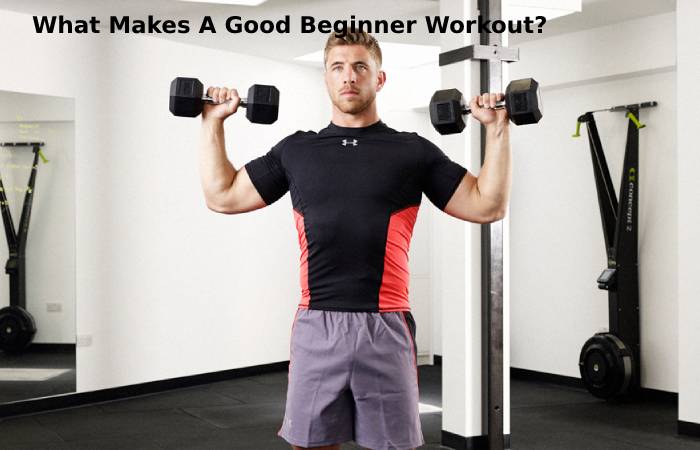Table of Contents
Fitness For Beginners
Answer Is Fitness – Starting a training program is exciting because of the anticipation of changing your body, mind, and life. If you stick to your training goals, you know you’ll feel better and gain confidence. But trying to navigate beginner workouts can be delicate. You can start to doubt yourself and ask yourself, “is this going to work?”
Well, with our help, it sure does. With guidance, you can make a beginner workout routine that delivers results. Good news: we’re here to answer all of your beginner training questions. Feel confident starting your practice, knowing that all your hard work will pay off.
What Makes a Good Beginner Workout?
Less is more, whether you’re just starting out or receiving back into the groove. A good beginner workout does not have to be fancy or take hours.
Struggle Training
Regarding resistance training, focus on simple, basic exercises that target your main muscle groups. Start with one or two exercises for all body parts (for example, lunges and squats for your lower body, chest press for your chest, dumbbell rows for your back, and Swiss ball crunches for your core).
Cardiac Training
The most real beginner cardio workouts are the ones you enjoy doing. Trying to power yourself to be a runner and dreading every race will not lead to success. If cardio isn’t your thing, try a HIIT workout for beginners. HIIT takes half the time to get similar results as steady-state cardio. And, if you want to cut down on training time, HIIT workouts that include strength training exercises can count toward your cardio and strength training sessions.
The opposite also is true. Sweaty, heart-pounding workouts, not your thing? Put on a podcast and get walking! Walking is a countless cardiovascular exercise that can be very effective. Bad weather or little time? Try FitOn’s walking ability class, where you can walk a mile in place from the comfort of your home.
At-Home Workout Options
Is there no gym? No problem. Whether you feel intimidated by exercising in public or don’t have access to a gym, here’s some good news. With it, there are tons of home workouts for beginners that will help you build muscle, tone up, feel energized, improve your health, and feel like a real rock star.
You can habit your body weight, but if you need to level up, you can invest in some versatile gear that doesn’t take up too much space like:
Dumbbells
The exercise equipment most people subordinate with strength training. For beginner dumbbell workouts, it’s best to spend in a lighter pair and a heavier pair to start with. Dumbbells can be used for simple strength training exercises like chest presses, one-arm rows, squats, lunges, and Russian twists.
Kettlebells
Kettlebells are cast-iron weights that range from 5 to over 100 pounds. You may have seen people swinging on them in videos or at the gym. These small but mighty exercises can burn more calories than other strength training equipment. The activities use momentum, statement, and stabilization to build endurance and power while toning your entire body.
Resistance Bands
Resistance band exercises for beginners are one of our favorites for exercising on the go (and anywhere, really). They can provide a selection of resistance levels for any strength exercise, and they’re compact and easily fit into your bag. Long bands with handles on sides are ideal for rows, chest presses, squats, and flies. Elastic bands are also significant: wrap around your ankles, calves, or thighs to add resistance to lower-body exercises.
How Long Should a Beginner Workout Previous?
A beginner workout does not have to take hours of your time to get the results you’re excited about. However, exercising too long too soon can leave you too sore to show up for your next workout. Consistency is critical when getting into the habit of exercising, so it’s important to feel your best to stick with it.
A good law of thumb to keep in attention is that the more intense your workout, the shorter it should be. So if you’re starting HIIT workouts for beginners, keep them under 30 minutes. You’ll be amazed how much you can attain with 15 minutes of more intense exercise.
Warm-Up & Cool Down
All workouts should start with an energetic warm-up with light resistance exercises or cardio to get the blood moving and the body ready for the movement. It is an essential step in your training routine that reduces the chance of injury. Likewise, avoid abrupt endings. Instead, take a few minutes to cool down with light aerobic exercise that lowers your heart rate and flexibility training, such as stretching, after you finish your workout.
Browse the stretching category in the FitOn app to find warm-up and cool-down classes to complement your exercise routine.
Conclusion
Too much implementation can lead to overtraining, which can cause increased resting heart rate, injury, lack of sleep, low energy levels, depression/anxiety, agitation, decreased performance, and extreme pain. Rest is an essential piece of the fitness puzzle that it’s easy to forget. However, magic happens when we REST. This is when the body can restore its levels, rebuild muscles and gather energy and fuel for the next session.
Also Read Normal Haemoglobin In Female – Definition, High Hemoglobin Levels, Low Hemoglobin Levels, And More

